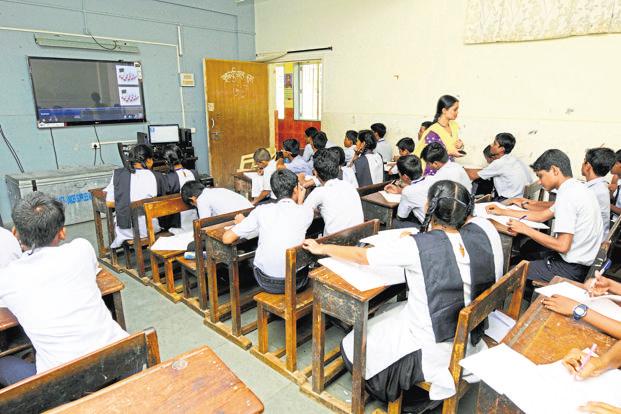Source – livemint.com
Futurist Arthur C. Clarke wrote, “Any sufficiently advanced technology is indistinguishable from magic.” The magic of software (giving data and rules to get answers) is often confused with the magic of machine learning (giving data and answers to get rules) but it is machine learning, not software that is transforming the world of computer chess.
So far, computer chess programs codified the actions of the best human players and inevitably pivoted around the strategy of “material”, wherein the number and value of pieces mattered most. But recently, AlphaZero playing Stockfish counter-intuitively sacrificed a bishop for a pawn. Reports suggest AlphaZero taught itself chess from scratch in just four hours by playing against itself and rejected human rules developed over centuries.
As it started with only the basic rules, researchers suggest that its lack of knowledge of human chess history may have enabled AlphaZero to see the game in a fresh way. We’d like to make the case that machine learning is transforming online education, but Indian online education is held back by regulatory cholesterol.
Before diving into online education, let’s reflect on challenges in education. Knowing must shift to learning because Google knows everything. Metrics need shifting from inputs to outcomes because only money is not working. Differentiation and personalization are not about making things easier for children but making learning accessible by tapping into motivations and abilities. Assessment needs to shift from annual exams to regular feedback. Teachers knowing content is not the same as their ability to create learning.
There is an element of eat your spinach in education, but schools largely work for front-row students. Lifelong learning needs a continuum between prepare, repair and upgrade. Employability is an objective. Timetables are an industrial-era model of one size fits all that blunt choices and learner agency. Most importantly, if you think formal education is everything, then just look at the president of the US.
Many educators agree online learning can transform education, but they don’t know how. Textbook and PowerPoint repackaged e-learning—the digital equivalent of paving the cow path rather than building a highway—mean that, so far, online offerings have not been able to blunt the obvious downsides of physical classrooms (one size fits all, huge costs, uneven teacher quality, etc.) despite obvious advantages (teaching with different speeds to people with different backgrounds and different starting points, class of one, cost, on-the-go, on-demand, crowdsourced, gamified, etc.).
We believe that the massification of machine learning could be the missing ingredient—enabling personalization, flip classrooms, rethinking assessments, enabling non-conventional credentialing, etc. Personalization via intelligent tutor systems that track “mental steps” and modify feedback, exercises, explanations and intervention to promote self-regulation, self-monitoring and self-explanation would revolutionize engagement.
A recursive and real-time meta-analysis of learning outcomes across students, cohorts, schools would considerably improve the efficacy of flip classrooms (where classrooms are used for discussions and students finish the lecture and learning in advance). Natural language, computer vision, and deep learning could answer student questions.
These systems are infrastructure to improve the signalling value of non-conventional or micro-credentialing, which in turn would discover the cognitive, behavioural and affective preferences for each learner. The biggest impact would be in assessment by moving it from an event to a process and reducing its labour intensity; for instance, tools like Sochobots, Lingolens and Gradescope use computer vision and machine learning to grade students’ work (even stuff like essays).
However, Indian online education is held back by regulatory cholesterol that distinguishes between distance and online education. E-commerce would never have happened if financial regulators had insisted on separating the offline and online. UPI/BHIM have gone from 0.1 million transactions in the month before demonetization to 140 million last month; they will reach a billion in a year. Payments for Indian consumers are almost free (marginal cost), while in the US regulations have protected margins for private platforms.
India’s regulatory issues include hubris (the ability of regulators to anticipate all situations), micromanaging (including defining the type of web links on your website) and continuous lobbying because of poor state capacity to effectively regulate, supervise and enforce. It is too late for evolution; we need a revolution under which universities do not require permission to launch any online courses.
Regulators can prescribe broad guidelines with a policy objective of creating biodiversity and innovation in business and operating models that would tackle the difficult trade-off between cost, quality and scale. Like with most treatment of regulatory cholesterol, this revamped regulation would be accompanied by improved supervision and strengthened consumer protection. But drunk-driving is not an argument against cars and regulations that ban or make online education difficult are silly.
Einstein once said that if you judge a fish by its ability to climb a tree, it will live its life believing it is stupid. Physical classrooms—because of the limitations of time and space—often make this error. India needs a massification and vocationalization of higher education at a cost that only online learning can do. This needs machine learning. But before that we need changes to our regulatory cholesterol.
